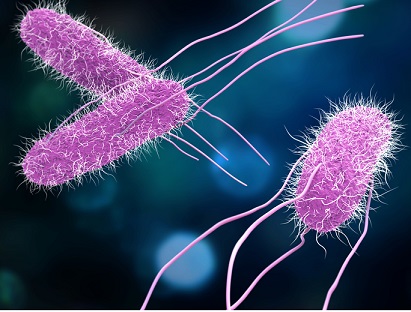Description Of Salmonella - Ans Ii Diseases And Parasites Pictures Courtesy Of Google Images Ppt Download : Its toxicity is due to an outer membrane consisting largely of lipopolysaccharides (lps) which protect the bacteria from the environment.
Description Of Salmonella - Ans Ii Diseases And Parasites Pictures Courtesy Of Google Images Ppt Download : Its toxicity is due to an outer membrane consisting largely of lipopolysaccharides (lps) which protect the bacteria from the environment.. Description salmonella poisoning (salmonellosis) is generally an infection with salmonella, i.e. Other articles where salmonella typhimurium is discussed: Salmonella is a type of bacteria that can cause diarrheal illness in humans. Salmonella can also get on the inside and outside of cages, aquariums and terrariums. More than 7,000 cases of salmonella were confirmed in 2009;
Description of the organism salmonella spp. Enterica is the type species and is further divided into six subspecies that include over 2,600 serotypes. Aerobic organisms are living things that require oxygen to survive. Salmonella bacteria typically live in animal and human intestines and are shed through feces. You can't see, smell, or taste it.

Feeder rodents fed to some pet reptiles and amphibians can be a source of the bacteria.
It occurs following ingestion of the bacteria on or in food, in water, or on fingers and other objects. However, mild and atypical infections may occur. More than 7,000 cases of salmonella were confirmed in 2009; Food products from diseased poultry, hogs, and cattle; Salmonellosis is the medical diagnosis for an individual who has been infected with the bacteria called salmonella. The new cells then follow the lytic cell cycle to continue reproducing. While some of the infections can be easily treated, some of the strains have been shown to resist antibiotic treatment and are therefore deadly. Outcomes from exposure to salmonella spp. Can range from mild symptoms to severe disease and can be fatal. Humans become infected most frequently through contaminated water or food. There are over 2,500 subtypes, including animal and human strains. The genus salmonella can be divided into two species (s. Their principal habitat is the intestinal tract of humans and other animals.
Humans become infected most frequently through contaminated water or food. Typically, people with salmonella infection have no symptoms. Feeder rodents fed to some pet reptiles and amphibians can be a source of the bacteria. Can range from mild symptoms to severe disease and can be fatal. Description of the organism salmonella spp.

Their principal habitat is the intestinal tract of humans and other animals.
Enterica serotype typhi, it is normally just shortened to: And wholesome food subsequently exposed to infected… Bongori), based on their phenotypic profile. Other articles where salmonella typhimurium is discussed: Aerobic organisms are living things that require oxygen to survive. Salmonellaare bacteria that can make people sick with an infection called salmonellosis. Typically, people with salmonella infection have no symptoms. A brief history of salmonella. Can range from mild symptoms to severe disease and can be fatal. Contract salmonella each year, and that an. Outcomes from exposure to salmonella spp. Salmonellosis is the medical diagnosis for an individual who has been infected with the bacteria called salmonella. While serogroup designation is performed routinely in many laboratories, the test lacks clinical utility.
Some are present in animals but can also affect. Other articles where salmonella typhimurium is discussed: Although the full name of the cause of typhoid fever is salmonella enterica subsp. Aerobic organisms are living things that require oxygen to survive. Salmonella is a type of bacteria that lives and grows within mammal intestinal tracts whenever the host eats raw contaminated foods that contains animal feces.
Salmonella infection (salmonellosis) is a common bacterial disease that affects the intestinal tract.
Salmonellosis is the medical diagnosis for an individual who has been infected with the bacteria called salmonella. Feeder rodents fed to some pet reptiles and amphibians can be a source of the bacteria. The new cells then follow the lytic cell cycle to continue reproducing. Their principal habitat is the intestinal tract of humans and other animals. More than 7,000 cases of salmonella were confirmed in 2009; The centers for disease control and prevention estimates that over 1 million people in the u.s. The causative bacteria is called salmonella. Salmonella bacteria typically live in animal and human intestines and are shed through feces. Enterica is the type species and is further divided into six subspecies that include over 2,600 serotypes. A brief history of salmonella. The genus salmonella is a member of the family enterobacteriaceae. Enterica serotype typhi, it is normally just shortened to: Today, the number of known salmonella strains totals more than 2,300, and.
Komentar
Posting Komentar